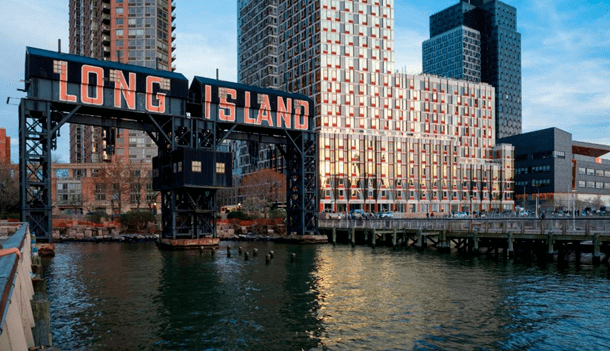Your Complete Guide to the NYC 2018 Real Estate Market Summary
Want to know what happened in the New York City real estate market last year? Now that 2018 is behind us, it’s a great opportunity to look back and see how the market changed and whether those trends will continue into 2019.
As a real estate agent, you need to stay up-to-date on market changes and trends. In a city that’s as fast-paced as New York, it can be easy to miss important changes when you’re up to your neck in work. Now that you have a chance to catch up, it’s time to get a bird’s-eye view of the market you experience day in and day out.
Buyer’s Market in Manhattan
The big story of the past year in New York has been declining prices and declining sales in Manhattan. For the fourth straight quarter, sales volume and prices dropped across Manhattan. Right now, Manhattan is something of a buyer’s market – at least compared to years past. It may not sound like good news for real estate agents, but in one of the most expensive cities in the world, lower prices could mean reprieve (and renewed interest) for first-time buyers, and opportunities for real estate investors looking to capitalize on discounts.

Softness in Luxury Apartments Spreads to Starter Market
High-end, luxury apartments in Manhattan have seen a tough time in the past few quarters, but until the end of 2018, Manhattan’s real estate downturn had been pretty limited to the luxury sector. The luxury sector has had a glut of supply. Back in the 2008 recession, the condo market and luxury sector were largely unaffected, so developers doubled down. There’s a lot of inventory and little urgency for high-income investors who have better investment options.
But the buyer’s market has widened to include the starter market too, with median prices dropping to $1.1 million. Part of that can be attributed to rising interest rates. Only half of all Manhattan apartments are purchased with a mortgage, but of those that are, the majority is in the starter range.
Studio and one-bedroom apartments that make up the starter market saw a sharp increase in inventory, with a 21 percent increase in one-bedroom inventory and a 15.5 percent increase in studio apartments.
Despite the increase in inventory and falling prices, there’s still a lot of activity going on in Manhattan. Sales remained 9.5 percent above the 10-year average. While prices may be resetting, there is still plenty of work for real estate agents. To successfully sell real estate in New York City today, sellers need to be sharp about pricing.
Impact of SALT Deduction Limits
One factor that’s causing softness in the Manhattan real estate market is that many people don’t know what their taxes are going to look like in 2019. Thanks to the SALT deduction limits introduced in 2017’s tax reform bill, many people in high-tax states like New York aren’t sure how much more in taxes they’re going to have to pay.
SALT deductions, which allowed taxpayers to deduct state and local taxes from their income when paying federal taxes, were previously unlimited. That softened the federal tax burden for those in high-tax states like New York, California, New Jersey, Connecticut, and others. A third of New York taxpayers have taken SALT deductions in the past, claiming an average of over $21,000. Now the limit has been moved to $10,000.
That’s one of the reasons sales volumes are down so dramatically. Buyers and sellers are in something of a stand-off, waiting to see their April tax bills before dropping sales prices or increasing their bids.

Pockets of Activity in Brooklyn
The story in Brooklyn is a bit different. The drop in sales and price has been much slower in Brooklyn, largely due to the fact that some pockets have seen sharp increases in activity. Sales in Williamsburg were down a significant 42 percent year over year due to lack of new inventory and transit news, but prices are up 18 percent in Brooklyn Heights, Dumbo, Downtown, and Cobble Hill. The Carroll Gardens, Boerum Hill, and Red Hook area saw a 29 percent increase in sales, Bedford-Stuyvesant increased by 13 percent, and incredibly high demand in Kensington, Flatbush, and Prospect Park South led to a 63 percent increase in sales there.
Neighborhood to Watch: Downtown Brooklyn
North Brooklyn neighborhoods like Williamsburg have long been the darling of renters and home buyers looking for an area with character, but with the prospect of the L train shut down on the horizon, real estate demand has taken a major toll. Search engine queries for Williamsburg rentals were down 1 percent according to Curbed. Fifteen months without the L train will cause real commuter chaos for the 400,000 Brooklynites who rely on it.
So what Brooklyn neighborhood has become the one to watch? According to StreetEasy, it’s Downtown Brooklyn thanks to a wealth of new luxury buildings, several subway connections, and proximity to Williamsburg and the Lower East Side.
StreetEasy calculates its annual list of “Top 10 Neighborhoods to Watch” based on which areas have the highest annual growth in median rent, median sale price, user searches on StreetEasy, and new construction. Real estate agents looking to earn higher commissions and do more business would do well to pay close attention to these up-and-coming neighborhoods. These are hotbeds of activity where it would be wise to do your research. They’re the neighborhoods your clients are going to start asking about.
In addition to Downtown Brooklyn, there were five other Brooklyn neighborhoods in StreetEasy’s top 10: East Flatbush, Crown Heights, Bedford-Stuyvesant, Cobble Hill, and Prospect Heights, showing a push outward as more renters and home buyers seek out affordability. Outside of Brooklyn, the Lower East Side (see the L-train shutdown once again), Mott Haven, Corona, and Auburndale also made the list.

Amazon HQ2 in Long Island City
The biggest headline grabber in NYC real estate news was probably the announcement that Amazon was going to launch part of its much-publicized HQ2 in Long Island City (with the other half going to the D.C. area of Virginia).
The announcement that Amazon planned to bring more than 25,000 white collar jobs and $2.5 billion in investments to Long Island City caused housing prices in the Queens neighborhood to skyrocket almost instantly.
Even before the Amazon HQ2 news, Long Island City was one of the fastest-growing neighborhoods in New York. Located directly across the East River from Midtown, it boasts some of the most incredible views of the city you can find, as well as an incredibly quick commute. In the last ten years, there have been more than 10,000 apartments added to Long Island City’s inventory, with another 19,000 planned and under construction. Long Island City also has a number of amenities including river-adjacent parks, museums, and a growing mix of restaurants, breweries, green spaces, and shops. Long Island City began as an overlooked industrial waterfront, home to factories like Steinway and Pepsi, leaving it open for redevelopment today.
Real Estate in Queens
With prices and sales down in Manhattan and mixed in Brooklyn, what’s going on in Queens? Home prices rose 7.1 percent year over year by August for the borough – 23 percent higher than they were in 2013. Queens houses moved fast, selling in a median of 62 days. By comparison, Manhattan real estate took a median of 99 days to close.
Queens offers much more affordability than either Manhattan or Brooklyn, with the median home price at a tantalizing $536,000 (compared to Manhattan at over a million and Brooklyn in the $700s). Queens housing affordability has a lot to do with how hard it was hit in 2008. As demand picks up with buyers traveling further afield, Queens housing prices are now 23 percent higher than they were in 2013. Real estate investors who put their money into Queens several years ago will soon be in a position to benefit from their savvy decisions.
How to Get Your Real Estate License in NYC
Fascinated by the New York City real estate market but not an agent yet? It’s time to learn how to become a real estate agent in NYC and start earning money from the real estate market.
With thousands of deals closing around the city and a diverse range of clientele, from starters to investors to luxury clients, there are plenty of opportunities to make your mark in NYC real estate. It all starts by taking the 75 hour real estate course in New York, which you can complete online.
Our 75 hour real estate course in New York will teach you the responsibilities and obligations of a real estate agent, such as understanding the real estate market, what you can (and can’t) tell your clients, and the steps you and your clients will have to take to complete a real estate transaction.
It’s also affordable. The 75 hour real estate course for NY from RealEstateU is only $99. With the low-cost and the flexibility of online courses, you’ve got nothing to lose by signing up for real estate courses. What are the steps you have to take after you complete your exam?
Step 1
Complete the RealEstateU proctored exam. You can schedule your exam once you conclude the online course. This will include sample questions from the NYC real estate exam and you must pass it before you can proceed to the state exam. To help you with the proctored exam, we provide a 200-page PDF of course material that makes studying easier. A textbook is not a requirement of the 75 hour real estate course in New York, so not all real estate license schools are going to provide this valuable study resource.
Step 2
Take the state exam. You can create an eAccessNY account with the New York Department of State to schedule your state exam. This is the same platform you can use to renew your real estate license (so don’t lose your login information). The exams happen across the state every Tuesday. There’s a passing grade of 70 percent and the exam consists of 75 multiple choice questions.
Step 3
Apply for your real estate license. Once you’ve passed your state exam, you can do this through your eAccessNY account with the help of your sponsoring broker. Who’s your sponsoring broker? We can help you find the right broker for you. Every real estate agent in NY has a broker who holds their license. You split your commission with the broker and in return, a good broker will provide you with resources to become a better salesperson and a better real estate agent.
Once you’ve completed your 75 hour real estate course and these 3 steps, you’re a real estate agent. For help or more information, get in touch with us today and we can help you get started.
Once you’ve got your license, it’s time to start finding clients and making sales. You’ll need marketing materials, a website, and a lot of hustle, but you’ll be working for yourself in New York City.
Your days and weeks are going to be busy, but it always pays to know what’s going on in the wider NYC real estate market. Things are always changing, and it pays to stay in the know. From subway shutdowns to new corporate HQs, tax deductions to fashion trends, the real estate market is influenced by so many outside factors it’s hard to keep track. Stay tuned to the RealEstateU blog for more updates about New York City real estate as it changes and evolves. Find out about what neighborhoods you should be telling your clients about and where selling prices are going. Your clients depend on your expertise when they’re selling or buying real estate. Be the expert they expect you to be.